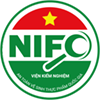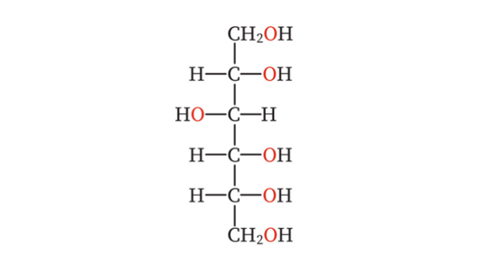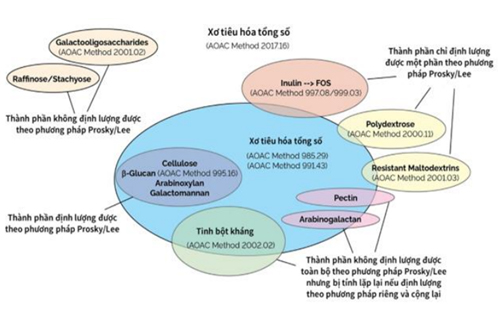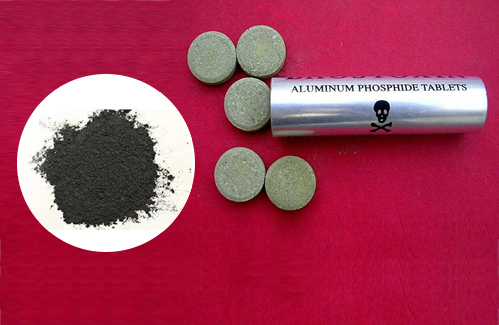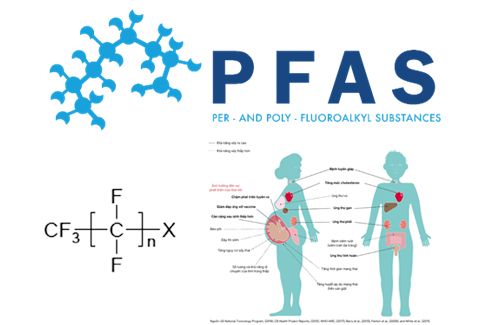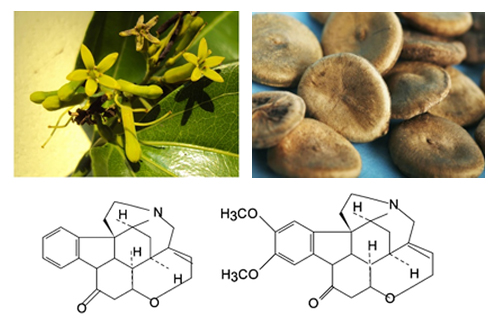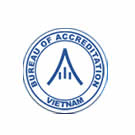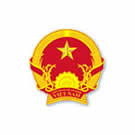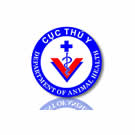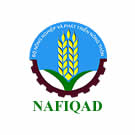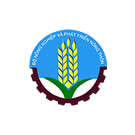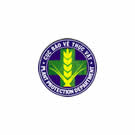- Folder Technical News
- Views 2164
- Last Updated 26/05/2022
Vietnam is a country that owns a variety of tropical vegetables, tubers, and fruits. Among them, vegetables, tubers, and fruits from red to purple contain antioxidants that are beneficial to health.
1. Why do vegetables, and fruits have color?
Flavonoids are a group of the largest phenolic compounds in nature, are biological pigments, important plant pigments responsible for the color of flowers, specifically helping to produce yellow, red, and blue pigments for petals to attract many insects to pollinate. About 2% of the carbon produced by plants is converted to flavonoids. More than 9000 natural flavonoids are characterized by many different plant species, classified according to their chemical structure and often divided into subgroups depending on the degree of oxidation of the pyran ring such as flavanones, flavones, flavonols, anthocyanins.
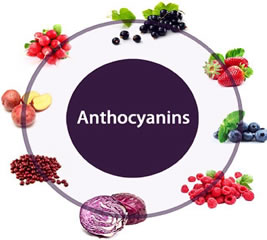
Structural alteration of phenols in natural products leads to simple forms of phenols (including phenolic acids, and coumarins) and polyphenols (collections of two large groups of flavonoids and tannins). Anthocyanins are secondary metabolites of polyphenols synthesized in most higher plants and contribute partly to purple, green, and red colors in leaves, flowers, and fruits. Anthocyanin group has received special attention in recent years because they are natural compounds with many valuable biological activities, which are being focused on research and exploitation for many different purposes.
2. Effects of Anthocyanins on human health
Anthocyanin compounds have been shown to bring many benefits to human health with valuable biological activities such as:
• Greater antioxidant capacity than vitamin E, vitamin C, and –beta-carotene should be used as an anti-aging agent, against immune deficiency, and resistance decline.
• Anthocyanins are widely used in medicine because of their ability to reduce vascular and cellular permeability, so they have the ability to prevent bleeding.
• Due to the ability to capture free electrons, anthocyanins have the ability to resist radiation and free radicals ·OH, ROO· ... so they have the ability to prevent the growth of some cancer cells, against cell damage when exposed to the radiation environment.
• For the nervous system: the activity of pelargonidin helps to prevent the nitrification of tyrosine, so it protects the nervous system and prevents arteriosclerosis.
• Anthocyanins can prevent atherosclerosis, prevent oxidation of low-density lipoprotein (LDL), help protect the heart and prevent oxidative stress.
• In addition, anthocyanins play an important role in preventing and treating eye diseases, improving the ability to see in the dark, lung diseases, and diabetes.
Some antioxidant mechanisms of anthocyanins:
- Anti-cancer activity
All cancers are caused by the formation, growth, and death of abnormal cells. Tumors are caused by the accumulation of cells in greater numbers than required for the growth, regeneration, and functioning of tissues. In in vitro and in vivo studies, anthocyanins both showed significant growth inhibition of cancer cells and inhibition of tumor angiogenesis. The anti-cancer mechanism of anthocyanins in particular and phenolic compounds, in general, has not been determined, possibly related to the inhibition of cyclooxygenase enzymes and antioxidant activity. Some studies on the anti-cancer potential of anthocyanins include:
- Anthocyanins in purple sweet potato and purple cabbage inhibit colon cancer in mice.
- The aglycones present in the most common anthocyanins such as cyanidin, delphinidin, malvidin, pelargonidin, and petunidin have the ability to inhibit the growth of human gastric, colon, and lung cancer cells.
- Compounds cyanidin - 3 - rutinoside extracted from mulberry fruit have been shown to inhibit MMP (Matrix metallopeptidase) enzymes, limiting the metastasis of cancer cells.
- Anti-cardiovascular disease activity
Flavonoid compounds in general and anthocyanins, in particular, are believed to have the ability to reduce the risk of coronary artery disease by preventing the oxidation of low-density lipoproteins in plasma. Oxidation of these compounds is considered to be an important step in the formation of atherosclerotic plaques and thereby leads to coronary artery disease.
The role of anthocyanins in the prevention of cardiovascular diseases is directly related to antioxidant activity, reducing inflammation, increasing the strength and permeability of blood vessel walls, and inhibiting the coagulation of platelets.
With these important effects, anthocyanins are increasingly interested, researched, exploited, and applied in many areas of life.
3. Anthocyanin content in some Vietnamese vegetables, tubers, and fruits
Research results at the National Institute for Food Control (NIFC) on anthocyanin content in some Vietnamese vegetables, tubers, and fruits are as follows:
|
No. |
Sample |
Content (mg/100g) |
anthocyanidin Total (mg/100g) |
||||||
|
Del |
Cya |
Petu |
Pelar |
Peo |
Mal |
|
|
||
|
|
Vegetables |
|
|||||||
|
1 |
Chua vegetable |
18.62 |
8.97 |
- |
- |
- |
- |
27.59 |
|
|
2 |
Banana flower |
2.62 |
13.23 |
- |
- |
- |
- |
15.85 |
|
|
3 |
Roselle |
71.21 |
24.23 |
- |
- |
- |
- |
95.44 |
|
|
4 |
Callisia fragrans |
- |
27.52 |
- |
- |
- |
- |
27.52 |
|
|
5 |
Talinum paniculatum |
- |
- |
- |
- |
- |
- |
- |
|
|
6 |
Red amaranth |
- |
1.21 |
- |
- |
- |
- |
1.21 |
|
|
7 |
Purple Cabbage |
- |
28.36 |
- |
- |
(+) |
- |
28.36 |
|
|
8 |
Perilla leaves |
- |
37.09 |
- |
(+) |
0.33 |
- |
37.42 |
|
|
9 |
Longevity spinach |
- |
2.86 |
- |
- |
- |
- |
2.86 |
|
|
|
Tubers |
|
|||||||
|
10 |
Red peanut |
- |
2.90 |
- |
- |
- |
- |
2.90 |
|
|
11 |
Purple onion |
- |
10.56 |
- |
- |
- |
- |
10.56 |
|
|
12 |
Purple garlic |
- |
71.24 |
- |
- |
- |
- |
71.24 |
|
|
13 |
Purple kohlrabi |
- |
32.64 |
- |
- |
- |
- |
32.78 |
|
|
14 |
Purple sweet potato |
- |
(+) |
- |
5.47 |
(+) |
- |
5.47 |
|
|
15 |
Amaranth tuber |
- |
- |
- |
- |
- |
- |
- |
|
|
|
Fruits |
|
|||||||
|
16 |
pomegranate |
1.14 |
2.28 |
- |
- |
- |
|
3.42 |
|
|
17 |
strawberry |
- |
5.70 |
- |
7.88 |
(+) |
- |
13.58 |
|
|
18 |
Black tomato |
- |
- |
3.17 |
- |
- |
1.00 |
4.17 |
|
|
19 |
Purple okra |
1.67 |
3.64 |
- |
- |
- |
- |
5.31 |
|
|
20 |
Apricots |
- |
6.00 |
- |
0.61 |
- |
- |
6.61 |
|
|
21 |
Purple grapes |
- |
2.45 |
- |
- |
2.93 |
- |
5.38 |
|
|
22 |
Black grape skins |
18.82 |
21.48 |
22.21 |
|
14.86 |
191.22 |
268.59 |
|
|
23 |
Tomato |
- |
- |
- |
- |
- |
- |
- |
|
|
24 |
Plum |
- |
12.71 |
- |
- |
- |
- |
12.71 |
|
|
25 |
Black bean |
28.37 |
59.52 |
3.44 |
1.16 |
4.27 |
2.54 |
99.30 |
|
|
26 |
Bell fruit |
- |
32.72 |
- |
- |
- |
- |
32.72 |
|
|
27 |
Eggplant |
1.40 |
(+) |
- |
- |
- |
- |
1.40 |
|
|
28 |
Red bean |
8.84 |
- |
- |
7.64 |
- |
- |
16.48 |
|
|
29 |
Red apple |
- |
31.2 |
- |
- |
- |
- |
31.2 |
|
|
30 |
Mangosteen peel |
- |
225.59 |
- |
(+) |
(+) |
- |
225.59 |
|
|
31 |
Apricot fruit |
2.61 |
43.30 |
- |
1.39 |
(+) |
- |
47.56 |
|
Among vegetables, Roselle has the highest anthocyanin content. Among the tubers. purple garlic has the highest anthocyanin content. Among the fruits, the highest is black grape skin (268 mg/100g), mangosteen skin (225 mg/100g) followed by black beans (99.3 mg/100g), apricot fruit (47.5 mg/100g). Compared with data published by the United States Department of Agriculture (USDA), the types of anthocyanidins detected in the subjects were similar but the concentrations differed possibly due to different origins.
Notably, black beans contain all 6 most common anthocyanidins and apricots contain 4 types of anthocyanidins with relatively high concentrations. Black beans are very popular in Vietnam and have been used regularly by people with many proven effects. Apricot is an unpopular fruit, grown in Quang Ninh and some northern mountainous provinces.
With fruits such as black currant. red apple, purple plum, users often tend to peel and peel off the skin. However, these fruits contain very high levels of anthocyanins in the skin. Therefore, it is recommended to eat the whole shell, not remove the shell.

Fruits contain high anthocyanin content
References
- Castaneda-Ovando A., de Lourdes Pacheco-Hernández M., Páez-Hernández M.E., Rodríguez J.A., & Galán-Vidal C.A. (2009), “Chemical studies of anthocyanins: A review”, Food chemistry, 113(4), pp. 859-871.
- Kamiloglu S., Capanoglu E., Grootaert C., & Van Camp J. (2015). “Anthocyanin absorption and metabolism by human intestinal Caco-2 cells—A review”. International journal of molecular sciences, 16(9), pp. 21555-21574.
- Lin B.W., Gong C.C., Song H.F., & Cui Y.Y. (2017), “Effects of anthocyanins on the prevention and treatment of cancer”, British journal of pharmacology, 174(11), pp. 1226-1243.
- Mazza G. (2007), “Anthocyanins and heart health”, Annali-Istituto Superiore Di Sanita, 43(4), pp. 369.
- Wallace T.C. (2011), “Anthocyanins in cardiovascular disease”, Adv Nutr 2: pp. 1–7.
